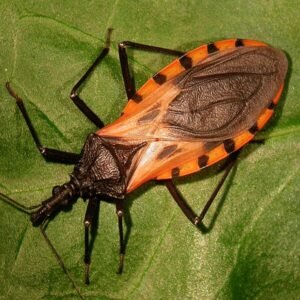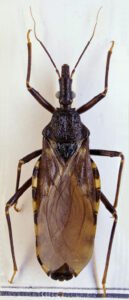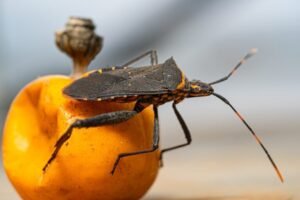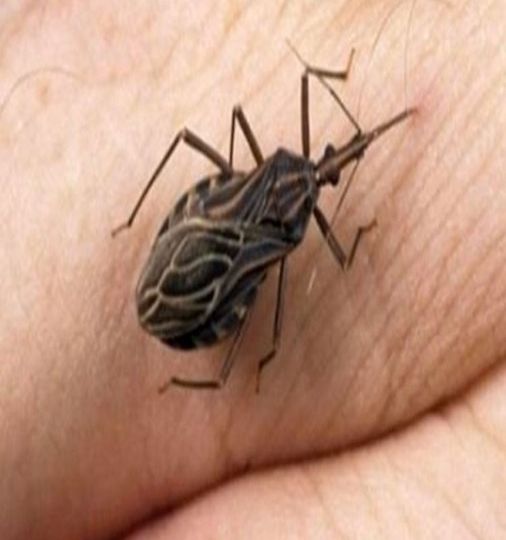Believe it or not, you might have more to fear from night bugs than from that horror movie you watched last week. Forget vampires and werewolves; today, we’re talking about the real bloodsuckers—nocturnal bugs carrying the deadly Chagas disease. Yes, you read that right. They come out at night, and the stories are as chilling as the title of this article.
Emiliana Rodríguez’s story is a perfect case in point. As a child in Bolivia, she saw a friend drop dead during a nighttime soccer game. Can you imagine the horror? She later learned it was Chagas disease, a dreadful condition that sneaks up on you when you’re most vulnerable—sleeping.
Fast forward to 42 years old, Rodríguez, now living in Barcelona, still refers to Chagas as a ‘monster.’ Why? Because even after moving continents, she couldn’t shake off its grim shadow.
About eight years back, during her pregnancy, Rodríguez discovered she was a Chagas carrier. Those old fears came rushing back, and let’s just say, pregnancy wasn’t the glowing experience that every commercial promised.

The relief came when her baby girl tested negative for Chagas. It’s like winning the lottery, only the stakes are insanely high.
Now, let’s hop over to Mexico. Elvira Idalia Hernández Cuevas had her day turned upside-down when her 18-year-old, while trying to be an everyday hero by donating blood, was found with Chagas. Surprise!
“I had never heard of Chagas,” Hernández said. Imagine that—living your life blissfully unaware, only to be smacked upside the head by something called a ‘silent killer.’
Chagas disease, folks, has been around since 1909, thanks to Brazilian physician Carlos Ribeiro Justiniano Chagas. You’d think after 114 years, the bugs carrying it would’ve found a new hobby. But no. And here’s a fun fact: while Chagas makes Latin America its playground, it’s also spreading its wings to North America, Europe, Japan, and Australia.
The ‘kissing bugs’ spread Chagas by biting you and then leaving a little, shall we say, ‘gift’ on your skin. If the gift gets into your eyes or mouth, congratulations! You’ve won a one-way ticket to Chagas-ville.
The CDC and WHO agree that around 8 million people in Mexico, Central America, and South America live with this disease, although most don’t even know it. Lovely, right? Just the kind of global menace we needed.
So what’s it like living with Chagas? For many, it’s a game of Russian roulette. Decades after the initial infection, 20 to 30% might wake up one day with severe heart or gastrointestinal problems. It’s like your own body is playing a long, cruel joke.

Hernández and her daughter Idalia had to go through a maze of clueless doctors before finding help. Hernández points fingers at Mexican authorities for underestimating Chagas and poorly training medical professionals. So if you think it’s hard getting a diagnosis for common ailments, imagine trying to get treated for something the docs don’t even recognize!
Chagas is a superstar on the WHO’s neglected tropical diseases list. According to Colin Forsyth from the DNDi, it doesn’t get the attention it deserves because it generally hits poor populations. Yet, it continues to claim lives and spread quietly through blood transfusions, organ transplants, and even from mother to child.
In the UK, Professor David Moore established the Chagas Hub to better manage testing and treatment. Sadly, the journey toward eliminating Chagas is still crawling like a snail on a leisurely stroll.
The old medications—benznidazole and nifurtimox—are like relics from the past. They work somewhat on babies but are far from perfect for adults. Side effects? Meet Rodríguez again: hives, dizziness, nausea—the works. Yet, she endured it all for the slim chance of beating the disease.

Professor Moore stresses the need for better meds, but pharmaceutical companies are dragging their feet, given the lack of financial incentives. Can’t say we didn’t see that coming.
In the meantime, Hernández isn’t sitting idle. As the president of FINDECHAGAS, she’s working to make the disease more visible and advocating for better resources and support. Kudos to her, because those nightmare bugs aren’t going to stop anytime soon.
If you wanted a bedtime story to keep you up all night, you’re welcome. Sweet dreams.






